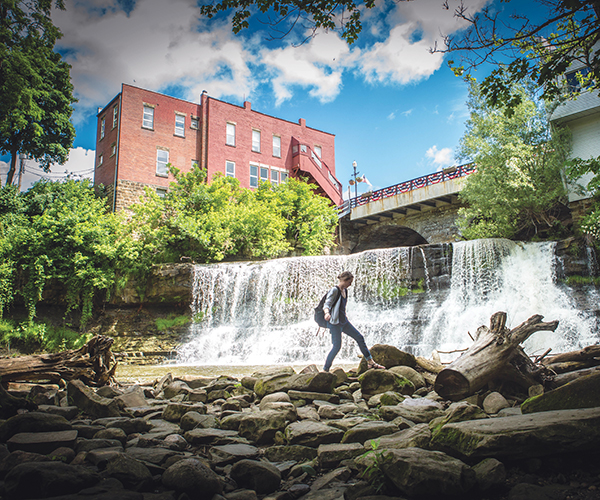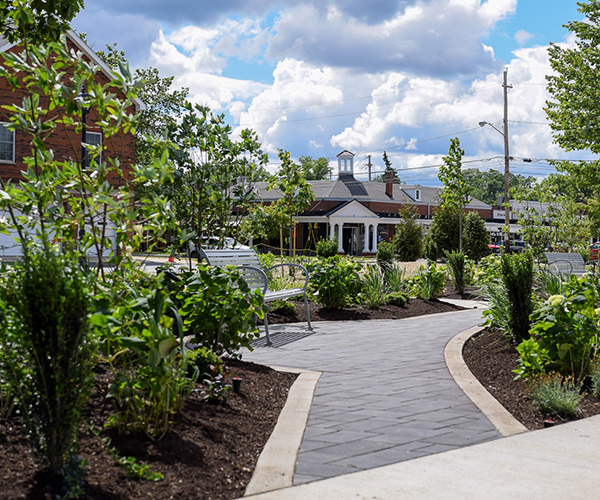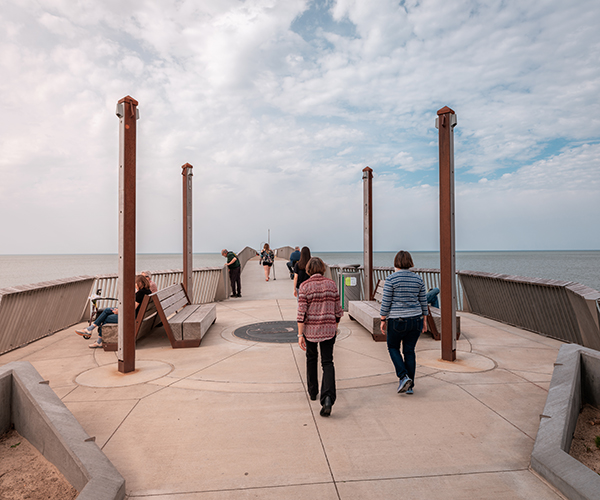Rating the Suburbs 2010 - History
This city pays homage to its past with careful planning, detailed architecture and well-kept homes.
When Dick Parke was a kid, he knew every century-old home in Shaker Heights. “As we’d drive around,” he recalls, “my mother would say: ‘That house is 100 years old! Isn’t that cool?’ ”
He caught the bug. Parke became a history buff, a Civil War memorabilia collector. At his alma mater, University School, he’s a math teacher, but he also runs a history club. The students know he carries a Civil War bullet with him at all times.
Parke, 56, now lives in one of those century homes. In 1997, he and his wife, Jude, bought an 1842 Greek Revival farmhouse on Shaker Heights’ Fairmount Boulevard. John D. Rockefeller is said to have hung out on the home’s side porch, planning Sunday school with his pastor, who lived there.
“[When I] go to sleep at night, if I’m having trouble, I’ll close my eyes, and my mind will picture what this looked like in 1852 without any streetlights or telephone poles,” Parke says. “I’ll picture a guy with a horse and wagon coming down the street.”
Parke commissioned a muralist to paint an 1860s scene above his mantle. It imagines what the area looked like then, depicting Parke’s house, a church and the grist mill of the North Union Shakers.
The religious community, 300 strong at its peak, lived just south of Fairmount Boulevard for 67 years. But its practice of celibacy was a poor strategy for growth; the last 27 of them left the area in 1889. Oris and Mantis Van Sweringen bought the Shakers’ former property in 1905, razed the abandoned buildings, and started planning Cleveland’s most meticulously crafted suburb.
Each home has fine detailing: roofs, window panes, balconies. The Van Sweringens “were taskmasters,” Parke says. “They were very specific in how you were allowed to build your house, how you landscaped it, what colors you were supposed to use.” Those exacting standards continue today in the city’s strict zoning.
“I often take the long way to get places, just to look at the architecture and the beautiful homes,” Parke says. He will turn down a side street to see one of those century homes, silently thankful to all the owners who’ve kept up their slate roofs.
“I don’t go to art museums,” Parke says. “I get more aesthetic and visual pleasure out of walking, riding a bicycle, or driving down a street like Shelburne, North Park, South Park or Townley Road.
“To me, that’s art.”
■ Chardon
The 141-year-old Geauga County Courthouse looks down on a square that’s filled with lunch and dinnertime picnickers in summer, a row of brick storefronts built after an 1868 fire, and streets of exclusive century homes.
■ Kirtland
The Mormon church’s years in Kirtland, in the 1830s, still define the town’s character, from the vintage buildings at the Historic Kirtland Visitor’s Center to the Kirtland Temple up the hill. The temple is now a tourist destination, host for communitywide holiday religious services and a favorite field trip for the public schools a block away.
■ Medina
Medina’s Public Square anchors a nine-block historic district, built mostly between 1871 and 1882. Residents can buy a single nut or bolt and get fix-it advice at 139-year-old Medina Hardware and enjoy century-old marching-band music at festivals on summer Fridays.
<< Olmsted Falls
This city still has its early downtown, built in the 1830s through 1860s: the old town offices, Civil War veterans hall and other buildings are now restaurants, shops and residences. Its historic district includes 257 buildings, including houses from the 1830s to the 1930s.
rating the suburbs
12:00 AM EST
May 27, 2010



